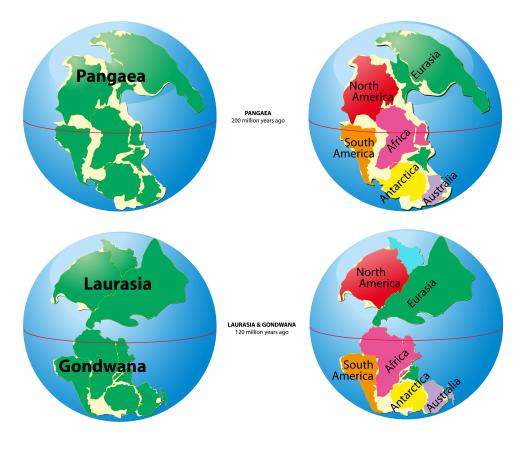What is Earth Science?
 Michael Anissimov
Michael Anissimov
Earth science is the scientific study of our planet, the Earth. It encompasses all sciences which focus on the Earth, and uses physics, geology, geography, meteorology, mathematics, chemistry and biology. The Earth sciences generally recognize four "spheres" of study of the Earth: the lithosphere, the hydrosphere, the atmosphere, and the biosphere, corresponding to rocks, water, air, and life. Sometimes the cryosphere is considered as a distinct portion of the hydrosphere, and the pedosphere (soil) is considered a subset of the lithosphere.
Earth science has established many simple but important facts about the makeup of our planet. One significant set of facts are the relative chemical abundances of our air (78% nitrogen, 21% oxygen, 1% water vapor, .93% argon, .03% carbon dioxide, .002% other) and crust (made up mainly of oxides, including 60 silica or sand). Earth scientists have accurately measured our planet's diameter (12,756 km or 7,926 mi) and mass (5.9736 × 1024 kg). They have also measured the path of the Earth around the Sun and its implications for seasonal variations in temperature and weather.

An important part of the Earth's makeup is its biosphere, or all the Earth's life. The Earth sciences regularly study the relationship between the biosphere and the rest of the planet, especially the atmosphere. Plants regularly convert atmospheric carbon dioxide into oxygen while animals do the opposite. The Earth's current oxygen-rich atmosphere was created billions of years ago when photosynthesis first evolved. Photosynthesis produces oxygen as a byproduct. The evolution of photosynthesis was such a significant chemical event for the Earth's atmosphere that it has a name — the Oxygen catastrophe, named because the massive release of oxygen was toxic to many of the organisms existing on the planet at the time.

One of the most significant findings of Earth science was in the 1950s, when it was proved that the continents are large rock plates floating on a liquid mantle underneath. This is now known as plate tectonics, and Earth scientists have found that at points in the Earth's distant past, all the continents were merged into one supercontinent known as Pangaea. This is important from the perspective of paleontology: when all the Earth's landmass was condensed into a single continent, the interior of the continent would have been subjected to such temperature extremes that it would have been difficult for complex life to survive there.
AS FEATURED ON:
AS FEATURED ON:















Discussion Comments
Wow, I always thought that plate tectonics had been figured out way before the 1950's. Not that geologists are behind on the game but the way it was presented to me growing up it was as if they had know this concept for many, many years.
I have to admit, when the concept was first proposed to me as a student in elementary school, I was skeptical. How on Earth, pardon the pun, could we be floating on top of molten magma. When we reach down and touch the ground, if feels so solid. Sure there are areas of mud and loose dirt but the mountains and rock below us give an almost certain feeling of solidity underneath or feat.
I wonder if we will ever travel into the Earth like we do into space. Hopefully it's not all science-fiction.
As a fifth grade educator in the State of California, we are charged with teaching Earth science to our students at this young age. While there may be some very complicated and even unknown science behind how our world works, there are a lot of simple and easily understandable concepts that we can pass along to youngsters.
One such lesson that takes a hand on approach is understanding how sedimentation can settle and sift though the varying types of rocks and materials in the Earth's surface.
We will take sandbox sand from the hardware store and combine it with two sizes of pea gravel and mix them in a disposable cake pan with water. When the mixture is swished around you can observes the natural tendencies of these materials and how they interact with each other.
My favorite part is when the students eyes light up with excitement because they have finally connected a very difficult to grasp scientific concept to a simple action and reaction. I love teaching!
Since the 1950s when Pangaea was discovered, scientists have estimated how long ago the continents were together as one supercontinent and how long it took them to separate. They believe the continents were connected about 250 million years ago before they started to separate.
This discovery also gave birth to the idea of the continental drift; the idea that the continents are always moving, just at an extremely slow speed, not noticeable to the average person.
They have used this information to estimate the continents' speed of travel and estimate when they might one day touch again to form another supercontinent.
Post your comments